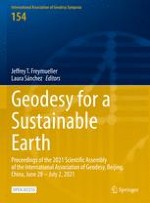This open access volume contains selected papers of the 2021 Scientific Assembly of the International Association of Geodesy – IAG2021. The Assembly was hosted by the Chinese Society for Geodesy, Photogrammetry and Cartography (CSGPC) in Beijing, China from June 28 to July 2, 2021. It was a hybrid conference with in-person and online attendants. In total, the Assembly was attended by 146 in-person participants and 1,123 online participants. The theme of the Assembly was Geodesy for a Sustainable Earth. 613 contributions (255 oral presentations and 358 poster presentations) covered all topics of the broad spectrum considered by the IAG: geodetic reference frames, Earth gravity field modelling, Earth rotation and geodynamics, positioning and applications, the Global Geodetic Observing System (GGOS), geodesy for climate research, marine geodesy, and novel sensors and quantum technology for geodesy. All published papers were peer-reviewed, and we warmly recognize the contributions and support of the Associate Editors and Reviewers.
